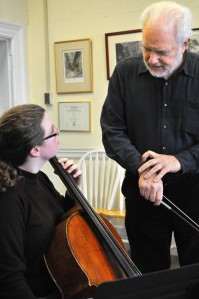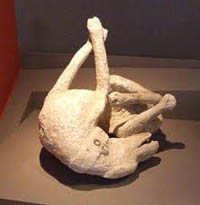Discoveries
Ever since I arrived in the U.S. in the 1990’s, I have been a subscriber to The New Yorker, which, at its best, is one of the most fascinating reads of the week. The magazine has been the vehicle for many personal discoveries—the writings of Joseph Roth and Alvaro Mutis, genuine political analysis (such a rare thing these days), theatre and movie reviews, excellent writing, and improbably seductive stories that you begin tentatively and, an hour later, realize you’re still reading. There was one such on the efficacies of medicinal leeches (Yes, I, too, thought they went out with the Middle Ages!) which I can still summarize and which I pull out at dinner parties when the conversation lags. There are, of course, the cartoons and the occasional piece by Woody Allen and Steve Martin, which are not to be missed. I confess I can never think of any caption for the cartoon competition each week. I stare and stare but words and images just don’t connect. Then the three short-listed entrants are published and I think, well, I could have done that. It will happen one day, I suppose.
The magazine has two weaknesses. The first is the choice of poetry, which is nearly always execrable. Actually, that’s unfair. There have been some truly notable exceptions like Stephen Dunne, Mahmoud Darwish, and Joe Heller. But the rest is pretty bad. The second weakness, although not nearly as bad, is the weekly short story. I always read the stories and maybe one in ten is worthwhile. “Birdsong” by Chimamanda Ngozi Adichie, included in their “Under 40’s” collection was just such an exception. Then there are the breathtaking exceptions, the pure gold examples. Milan Kundera’s “Nostalgia” of a few years ago, and recently  Téa Obreht’s “The Tiger’s Wife.” The latter now forms the central section and inspiration for Téa Obreht’s first book of the same name. Who is Téa Obreht? I have no idea. All I know is that she is very young but was born a long time ago and writes the most inspired stories about the former Yugoslavia. Storytelling when it’s done well is the stuff of art. It mesmerizes us, fascinates us, stops time, feasts our imaginations. Inspired storytelling is a kind of enchantment conjured up by the virtuosic play of words and mental images that evokes responses from deep within our sub-conscious. Téa Obreht’s stories have this magical quality. Here is a short section introducing the Tiger:
Téa Obreht’s “The Tiger’s Wife.” The latter now forms the central section and inspiration for Téa Obreht’s first book of the same name. Who is Téa Obreht? I have no idea. All I know is that she is very young but was born a long time ago and writes the most inspired stories about the former Yugoslavia. Storytelling when it’s done well is the stuff of art. It mesmerizes us, fascinates us, stops time, feasts our imaginations. Inspired storytelling is a kind of enchantment conjured up by the virtuosic play of words and mental images that evokes responses from deep within our sub-conscious. Téa Obreht’s stories have this magical quality. Here is a short section introducing the Tiger:
“Some hours before sunrise, the tiger found himself in the abandoned market at Kalinia, two blocks up from where my grandfather and grandma would buy their first apartment fifteen years later. Here, the scent of death that clung to the wind drifting in from the north separated from the pools of rich stench that ran between the cobbles of the market square. He walked with his head down, savoring the spectrum of unrecognizable aromas – splattered tomatoes and spinach that stuck to the grooves in the road, broken eggs, bits of fish, the clotted fat leavings on the sides of the butchers’ stands, the thick smell smeared around the cheese counter. His thirst insane, the tiger lapped up pools from the leaky fountain where the flower women filled their buckets. And then put his nose into the face of a sleeping child who had been left, wrapped in blankets, under the pancake stand.”
What I love about this is the almost over abundance of ideas and images, but this superfluity is the hallmark of the great storyteller. It is a book well worth your attention.
I was opining recently about string quartets to the cellist and NEC faculty member Paul Katz.  A founding member of the Cleveland Quartet, Paul has undoubtedly forgotten more about the medium than I’ll ever know. So I confess it was with a certain temerity that I asserted the importance of the first violinist as leader of the ensemble, the player who shapes its very individual character. Paul listened and then in a very subtle, charming, and thoughtful way redirected me by saying that that was a very English way of looking at the string quartet. In the U.S., he said, a more collective and perhaps productive balance between the players has developed. I had been beautifully put in my place. This charm and deep knowledge and love of music and the cello in particular can now be accessed online through Paul’s new Cello Bello website.
A founding member of the Cleveland Quartet, Paul has undoubtedly forgotten more about the medium than I’ll ever know. So I confess it was with a certain temerity that I asserted the importance of the first violinist as leader of the ensemble, the player who shapes its very individual character. Paul listened and then in a very subtle, charming, and thoughtful way redirected me by saying that that was a very English way of looking at the string quartet. In the U.S., he said, a more collective and perhaps productive balance between the players has developed. I had been beautifully put in my place. This charm and deep knowledge and love of music and the cello in particular can now be accessed online through Paul’s new Cello Bello website.
The site is stunning and Paul has come up with something really new, a resource that will help cellists and indeed all string players across the globe. It presents consummate teaching through brief video sequences on everything you need to know about playing the instrument from shifting position, to vibrato. It’s all delivered with intense love for every aspect of the instrument and authoritative command of what you need to play it well. This website explores new territory and I am sure that many others will want to follow it. Bravo, Paul, for an extraordinary achievement.
In New York City through early October, there is a fascinating exhibit devoted to “Pompeii.” It has been assembled by the Discovery Channel and you can find it on Broadway and 44th. As you probably know, Pompeii was destroyed in AD 79 by the volcano Vesuvius and this small city of some 30,000 inhabitants disappeared beneath 12 feet of ash for the next nearly 1800 years. In the 19th century the site was rediscovered and quietly excavated by archeologists revealing the city caught in the moment of death. The artifacts on display, from mirrors and hairpins to the most ornate dining tables, show us life pretty much as it’s lived now. The connection over two millennia is palpable.
But then there is the last and most moving section of the exhibition. Indeed, it is almost too private and emotional for public viewing. These are the plaster casts of the dead.
It was discovered by the early archeologists that if you poured plaster into the hollow mounds of ash that entombed the Pompeians, the shapes of long decayed victims could be recreated.  So at the exhibit, we witnessed the casts of people and animals in their last moments of life. These included a dog chained to a post and gradually suffocating in the gas and ashes, which clearly ran around and around in a futile effort to climb higher. The most moving was a young woman who had obviously been running to find some form of escape and had fallen, pulling up her dress to cover her mouth from the fumes. The scene, too private and personal for me in so many ways, nevertheless reminds us of our fragile humanity and vulnerability even in the places we believe are safest.
So at the exhibit, we witnessed the casts of people and animals in their last moments of life. These included a dog chained to a post and gradually suffocating in the gas and ashes, which clearly ran around and around in a futile effort to climb higher. The most moving was a young woman who had obviously been running to find some form of escape and had fallen, pulling up her dress to cover her mouth from the fumes. The scene, too private and personal for me in so many ways, nevertheless reminds us of our fragile humanity and vulnerability even in the places we believe are safest.
Just across the street from NEC is, to my mind, at least, the best restaurant in Boston. It’s called Moby Dick and it can be found at 269 Huntington Avenue.
 The name is a mystery to me as it is run by an extraordinary Iranian woman called Moti. Moti adores cooking and her dishes are presented with pride and love. She has a way with saffron which insinuates itself into almost everything including ice cream. But the best dish is sea bass with saffron which sometimes has to be ordered specially but appears to be generally available at the moment. It is unspeakably special and should be the reason to come and visit Boston. Enjoy!
The name is a mystery to me as it is run by an extraordinary Iranian woman called Moti. Moti adores cooking and her dishes are presented with pride and love. She has a way with saffron which insinuates itself into almost everything including ice cream. But the best dish is sea bass with saffron which sometimes has to be ordered specially but appears to be generally available at the moment. It is unspeakably special and should be the reason to come and visit Boston. Enjoy!

No comments yet.
Add your comment